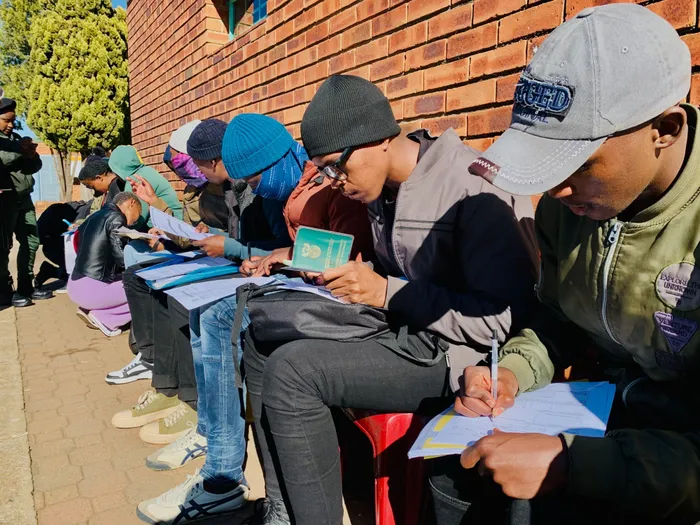Unemployment rate goes down, but still very high

File photo of the Gauteng Provincial Government hosting a jobs fair in Soweto and around the province in an effort to address unemployment in the province. Picture: Bhekikhaya Mabaso / Independent Newspapers
The government has been slammed for failing to implement job-stimulating policies as South Africa’s unemployment rate remained disproportionately high between July and September, in spite of the eight consecutive increase in employment since the fourth quarter of 2021.
This comes as Statistics South Africa (StatsSA) yesterday reported that the unemployment rate fell to its lowest level in a year, easing to 31.9% in the third quarter from 32.6% seen in the previous quarter.
This means that the rate of unemployment in South Africa remains the second highest in the world with nearly 8 million people of working age without jobs, preceded by Sudan at 46% unemployment according to the latest figures from the International Monetary Fund.
DA MP responsible for employment and labour Dr Michael Cardo said the ANC’s “Big Brother” approach to running the economy was killing jobs, with small businesses hampered by red tape.
“The ANC has done nothing to fix the structural barriers that stunt South Africa’s growth and hinder job-creation,” Cardo said.
“In addition to its inability to foster the requisite growth, the ANC has failed to relax labour market regulations and improve the quality of our education system.”
StatsSA’s Quarterly Labour Force Survey (QLFS) showed that a total of 979 000 jobs were created in the third quarter compared with the same period last year, driven mainly by higher employment in finance, community and social services, domestic trade, and construction sectors.
However, employment was still down by 33.7%, or 411 000 jobs, for the year to date compared with the same period in 2022, reflecting slower job creation during the first half of the year when load shedding was more intense.
Minister in The Presidency Khumbudzo Ntshavheni said the slight, but notable increase in employment and decrease in unemployment rates reflected the government’s concerted efforts to address the challenge of unemployment in the country.
“The results are a testament to the collaborative efforts of the public and private sectors, as well as the hard work and dedication of our citizens,” Ntshavheni said.
“We will continue to implement policies that encourage investment, stimulate economic activity, and promote innovation, all of which contribute to sustained job creation.”
According to the QLFS, the number of employed persons increased by 399 000 to 16.7 million in the third quarter compared to 16.3m in the second quarter.
Meanwhile, the number of unemployed persons decreased by 72 000 to 7.8m during the same period.
StatsSA said the youth remained vulnerable in the labour market, however, the third quarter of 2023 results show that the total number of unemployed youth (15–34 years) decreased by 174 000 to 4.6m while there was an increase of 237 000 in the number of employed youth to 6m.
Anchor Capital’s investment analyst, Casey Delport, said high levels of unemployment led to decreased tax revenue as fewer individuals contributed to the tax base, limiting the government's ability to fund essential services and infrastructure projects.
Delport said the fiscal burden also intensified as unemployment gave rise to increased demand for social welfare programmes, such as unemployment benefits and poverty alleviation initiatives, placing additional pressure on public expenditure.
“To address this fiscal challenge, South Africa needs targeted policies that stimulate job creation, enhance skills development, and foster an environment conducive to investment and business growth,” Delport said.
“Typically, in the SA economy material job creation has only occurred when GDP (gross domestic product) growth approaches 3% per annum. Thus, regardless of the seemingly resilient nature of the local economy to the various structural constraints present, simply put, the economy is not growing at an adequate rate to sustainably boost long-term employment prospects for South Africans as a whole.”
BUSINESS REPORT
Related Topics: